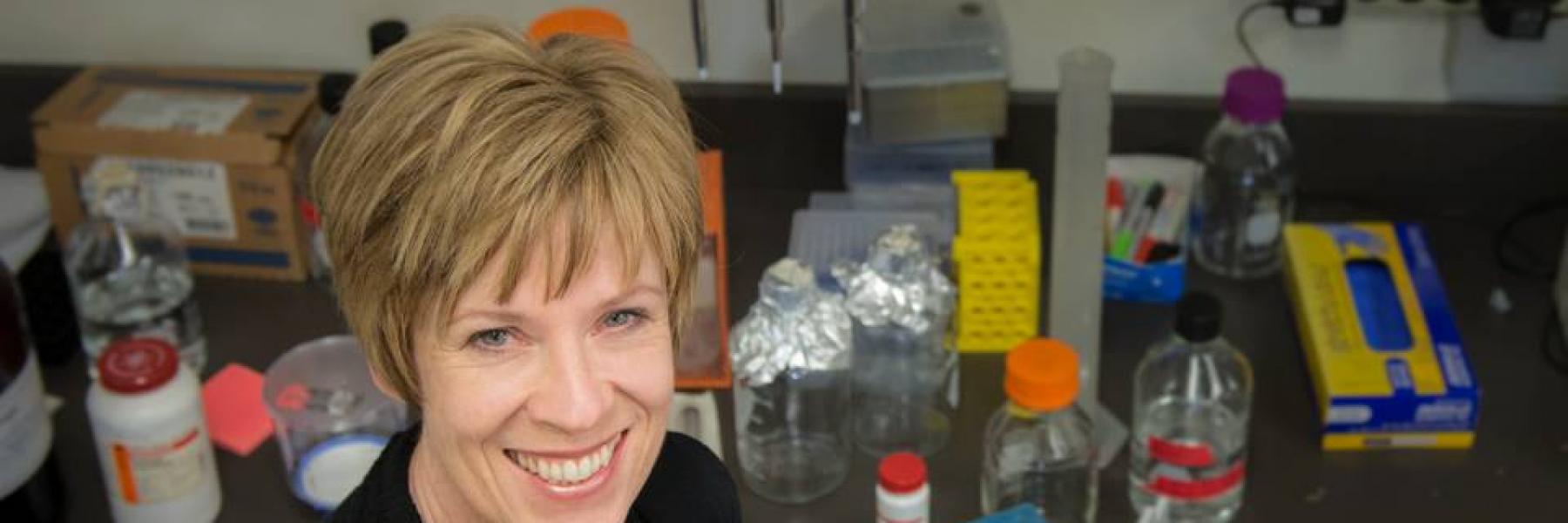
Paula Cannon is a Professor in the Department of Molecular Microbiology & Immunology at the University of Southern California’s Keck School of Medicine. Cannon has a longstanding involvement in gene therapy research for HIV; a webcast of her excellent plenary presentation on the topic at CROI 2016 is available online.
What are you working on right now?
We know that our cells have many genes whose role is to defend against viral infections. However a successful human virus like HIV has often figured out a workaround. Sometimes this is because the virus has evolved genes that target these host ‘restriction factors’ and block their action. But just like a game of chess, we can in turn think of ways to ‘tweak’ our human genes so that they once more work against HIV.
Recent gene therapy tools such as CRISPR/Cas9 are giving us the precision we need to do this. In my research group, we are currently doing experiments to evaluate which genes and which changes can give us the best anti-HIV effects.
What do you see as the key challenges in developing a gene therapy-based cure for HIV infection?
A major challenge is always going to be the risk benefit calculation…what should we do, and when is it safe to do it? Because gene therapy is still a very new field of medicine, and because we are often attempting to do things first in people with HIV, those factors increase at least the theoretical risk. We certainly offset this by remembering the severity of this disease, but we also have to recognize how effective antiretroviral drugs are. Balancing all of this is a challenge.
Does gene therapy have potential advantages over other approaches like latency reversal?
I believe so. The idea is that your body’s own cells can be modified to fight HIV – either by being made resistant, or by being directed to kill HIV-infected cells, Whatever the specific approach, I believe that the power is by having long-lasting cells in the body that can continuously act against the virus.
There are some ongoing trials involving gene modification of stem cells in people with HIV and cancers, do you have a sense of when results from those studies might become available?
The idea behind trials that modify stem cells is that since these cells give rise to all of the cells of the blood and immune system, introducing genetic changes into stem cells (such as making them HIV resistant) is a way to get a lot more bang for your buck. However the down side is that such trials can be quite long before we expect to see any effects, because modified stem cells take time to repopulate the body with new blood and immune cells. The trials also start out small—we are being appropriately cautious for safety reasons—so that can also add to the length of time before results can be reported.
The practicality and cost of gene therapy approaches are sometimes raised as potential limitations; do you think it might be possible to address those concerns?
Absolutely. This is an area of discussion for all gene therapies, and will probably first be worked out for some of the new cancer gene therapies that are creating a lot of excitement. Some creative options are being considered, including only-pay-if-it-works. But ultimately, once therapies move out of the tiny clinical trial phase and into more widespread use, we will see economies of scale.
Has the recent success of gene therapy approaches against cancers helped spur the HIV field?
Most definitely. There is so much excitement now about immune gene therapies such as CAR T cells, which are taking the cancer world by storm. I think that they really show that the best ‘hunters’ in the body are our own immune cells. I can’t wait for the day that there is as much evidence of effectiveness for the various anti-HIV approaches.


